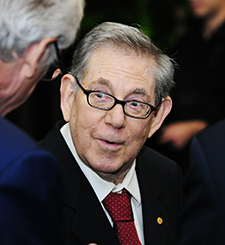A tribute to Nobel Laureate and former CSU Adjunct Professor Paul Crutzen
Science lost a brilliant researcher and the planet lost a steadfast advocate with the death of Paul Crutzen on Jan. 28. Crutzen, an atmospheric scientist, was one of the first to link human activities to ozone deterioration, leading to the worldwide ban on ozone-depleting substances. He was awarded the 1995 Nobel Prize in Chemistry, with Mario Molina and F. Sherwood Rowland, for discovering the chemical processes that cause ozone depletion.
Crutzen pioneered many other significant scientific discoveries. He was the first to explore biomass burning’s impact on the atmosphere; he warned that nuclear war would lead to nuclear winter; he proved the Earth is in a new epoch influenced by humans, which he termed the Anthropocene; and he started the debate on potential geoengineering to abate the effects of greenhouse gases.
“Any one of these would be a major life’s work for most of us. Yet, they are only a few examples of so many of Paul’s contributions,” said University Distinguished Professor A.R. Ravishankara, a friend of the late professor. “You cannot pick up an important atmospheric chemistry paper without seeing a reference to Crutzen’s work.”
Prior to directing the Max Planck Institute for Chemistry in Mainz, Germany, from 1980 to 2000, Crutzen was an adjunct professor in Colorado State University’s Department of Atmospheric Science, from 1976-81. Around the same time, he served as a senior scientist and director of the Air Quality Division at the National Center for Atmospheric Research in Boulder.
Read the full Source article, “A tribute to Nobel Laureate and former CSU Adjunct Professor Paul Crutzen.”
Photo credit: Carsten Costard, MPI-Chemie



